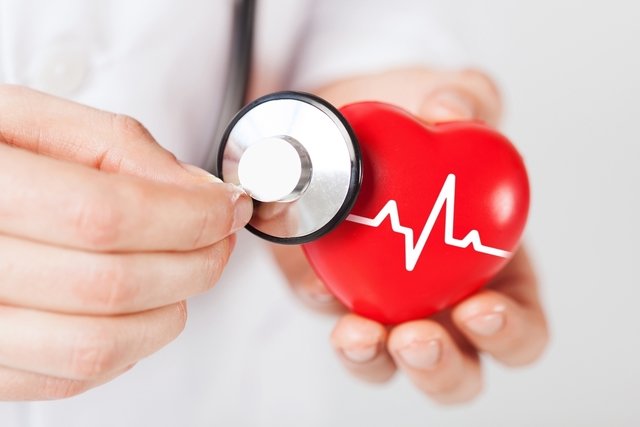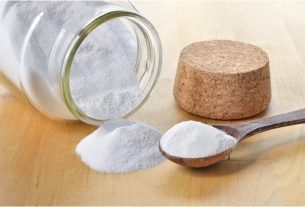Symptoms of a heart attack, such as chest pain and cold sweat, can appear when a blockage or clogging of a blood vessel in the heart occurs, generally due to the appearance of fatty plaques or clots, impairing the flow of blood and causing cell death. heart muscles.
However, heart attack symptoms can vary in young people, women and the elderly, from cases that present no or few symptoms to symptoms that are different from usual, such as stomach pain, fainting or nausea. Therefore, a heart attack is not always easily recognized.
See how to identify the symptoms of a heart attack in the following video:
Heart attack symptoms
The main symptoms that may indicate a heart attack include:
- Pain or discomfort in the chest with tightness, burning or heaviness;
- Chest pain that also affects the shoulder, neck, jaw, and arm, usually on the left side;
- Burning sensation or discomfort in the stomach, unrelated to food;
- Pain in the back, arms, jaw or abdomen;
- Fainting;
- Tiredness;
- Nausea;
- Accelerated heart;
- Paleness and cold sweat;
- Difficulty breathing or rapid breathing.
Heart attack pain generally does not worsen or lessen with changing position and tends to continue even with rest, generally lasting more than 20 minutes.
In some cases, it is also possible to feel pain in the stomach, as the same nerves that radiate to the heart also radiate to the stomach, causing pain and pressure in the upper abdomen.
If a heart attack is suspected, it is recommended to go to an emergency room for a detailed evaluation and start the most appropriate treatment.
Don’t ignore the signs your body is giving you!
1. Heart attack symptoms in women
Women tend to experience heart attack symptoms that are different from the more common ones, including symptoms such as stabbing chest pain or pain that worsens with breathing, weakness, tiredness, shortness of breath and indigestion.
Furthermore, symptoms such as pain in the back, arm, neck or jaw, nausea, vomiting, and feelings of fear are more common in women compared to men. Check out more details about the symptoms of a heart attack in women.
2. Heart attack symptoms in young people
The symptoms of a heart attack in young people are generally not very different from those that normally occur. However, while older people may experience chest pain months or years before having a heart attack, when chest pain appears in young people, this interval is usually shorter, and can be up to a week before the episode.
Younger people are also more likely to have a fulminant heart attack, one that appears suddenly and can often lead to death even before receiving medical attention. Understand more about fulminant heart attack.
3. Symptoms of heart attack in the elderly
Elderly people are at greater risk of having a silent heart attack, which causes few symptoms, as well as symptoms that are different from those that normally occur in younger people, such as sudden drowsiness or confusion.
Furthermore, heart attacks in the elderly tend to cause fewer symptoms such as chest pain or excessive sweating, with symptoms similar to heart failure being more common, such as shortness of breath and coughing. Check out other symptoms and causes of heart failure.
Online test for heart problems
See your risk of developing heart problems by entering your data into the calculator:
When to go to the doctor
It is important to seek an emergency room if there is intense pain between the mouth and the navel that lasts more than 20 minutes associated with other symptoms that may be caused by a heart attack, such as cold sweat, shortness of breath or malaise, especially in cases of history diabetes, high blood pressure, obesity and high cholesterol.
In case of fainting caused by a heart attack, cardiac massage is generally recommended while waiting for the ambulance to arrive, as it increases the person’s chances of survival. See how to do cardiac massage correctly.
Bibliography
- JIMÉNEZ-MÉNDEZ, César; VILLANUEVA-DÍEZ, Pablo; ALFONSO, Fernando. Non-ST segment elevation myocardial infarction in the elderly. Reef. Cardiovasc. With. Vol.22, n.3. 779–786, 2021
- KLONER, Robert A; CHAITMAN, Bernard. Angina and Its Management. J Cardiovasc Pharmacol Ther. Vol.22, n.3. 199-209, 2017
- MEHTA, Laxmi S. et al. Acute Myocardial Infarction in Women: A Scientific Statement From the American Heart Association. Circulation. Vol.133, n.9. 916-947, 2016
- GULATI, Rajiv et al. Acute Myocardial Infarction in Young Individuals. . . . Mayo Clin Proc. Vol.95, n. 136-156,
- SHAH, Nadim et al. Myocardial Infarction in the “Young”: Risk Factors, Presentation, Management and Prognosis. Heart Lung Circ. Vol.25, n.10. 955-960, 2016
- STATPEARLS. Myocardial Infarction. 2022. Available at: <https://www.ncbi.nlm.nih.gov/books/NBK537076/>. Accessed on Aug 8, 2022

Sign up for our newsletter and stay up to date with exclusive news
that can transform your routine!
Warning: Undefined array key "title" in /home/storelat/public_html/wp-content/plugins/link-whisper-premium/templates/frontend/related-posts.php on line 12
Warning: Undefined array key "title_tag" in /home/storelat/public_html/wp-content/plugins/link-whisper-premium/templates/frontend/related-posts.php on line 13





